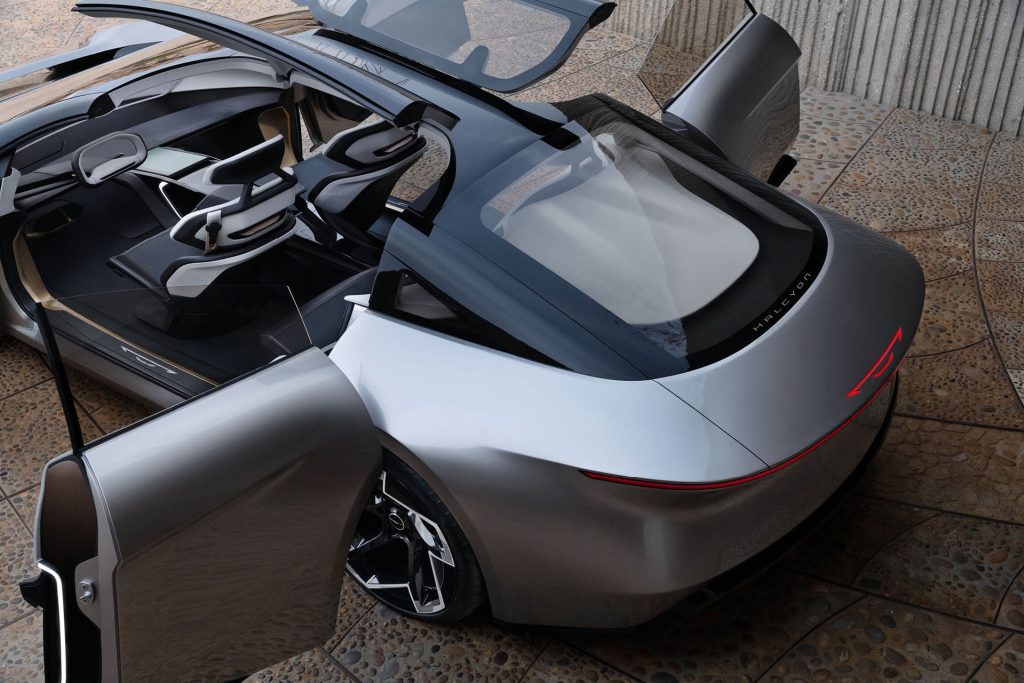After flying under the radar for several years, Chrysler is planning a comeback in a big way, with its newly revealed Halcyon Concept helping lay the foundations for the brand’s future.
By 2025, the American carmaker is set to reveal its first electric model ahead of its transition to an all-electric brand in 2028. This is welcome news for Chrysler considering it only had two models in its line-up just last year – the Pacifica people mover and 300C sedan, the latter of which is no longer in production.
So then, the Halcyon has big shoes to fill, and if a production version does ever see the light of day, then we’re sold.
Don’t let its sleek profile fool you into thinking this is some swanky coupre, as what you’re looking at is a sedan with four doors, the rear of which are suicide. The car’s body sits just four inches off the road at the front, allowing air to flow through an aerodynamic pass-through and over its greenhouse-like cabin area.

Speaking of the cabin, the interior is said to offer an almost 360-degree range of view for occupants, including the driver who is treated to a transparent head-up display that stretches across the dashboard. There’s also a stowable 15.6-inch console screen that can be rotated in portrait or landscape orientations.
As all futuristic concepts do, the Halcyon features autonomous driving capability, with its reverse-yoke steering wheel able to be folded away and pedals retracted when in use to create a “zen-like environment” inside. Helping bring more of that natural feel in is the use of 95 per cent of sustainable materials throughout the interior, including recycled PET bottles and polyester.
As for its underpinnings, the model is hypothetically based on Stellantis’ STLA Large electric platform which is the same one found underneath the new Dodge Charger EV. The concept also features a lithium-sulfur battery that sees a 60 per cent reduction in carbon footprint compared to today’s batteries.
The Halcyon is the fourth concept to come out of Chrysler’s styling studio in recent years, following the Portal that was revealed in 2017, followed by the Airflow in 2022, and the Synthesis Cockpit Demonstrator in 2023.


